- Learning time
- 10 minutes
- First play time
- 60 minutes
Traintopia
Designed by: Przemek Wojtkowiak
In Traintopia, each player is building their own train track – or tracks – by laying tiles together into their own play area. You score points in a number of ways, both during and at the end of the game, and the player with the most points wins.
Each player starts with a couple of tiles in place already, and over the course of 8 or 9 rounds, there’s a drafting phase when a number of tiles and passengers are revealed, potentially along with trains and mailbags. Everyone in turn takes first one, and then a second item from what’s available, and adds it to their track.
Tiles are simple: you just add them to your previously-played tiles in a way that joins, or at least doesn’t interrupt, existing track, unless ending at at a station. Some tiles also come with money – you can either leave it on the tile for end-game scoring, or spend it to get a juicy bonus tile: there are ten available. Passengers come in four types: three (green, yellow, grey) are commuters that score the moment they’re placed on your tracks: a point for every section of tile the track passes through that matches their colour. Tourists (white) score the point value of every tourist destination the track passes by. Finally mailbags and trains come into play at the end of the game, which is after the final round. Note that each of your tracks can’t contain more than one of each type of playing piece – if a line has all three commuters, a tourist, mailbag and train on it, nothing can now be placed there.
There are never any ordinary tiles available in the last round – it’s always the same four options of mailbag, train, a small station-only tile and a wild passenger (purple) you can choose to play as a commuter or tourist. Then everyone scores for completed tracks (that have a station at either end) tracks with trains that go past unspent money, and the longest tracks. Players will also each have a secret objective card that, if their tracks meet the requirements (eg: two tracks with every type of commuter on) will gather them extra points.
The guru's verdict
-
Take That!
Take That!
You can't interfere with each other's tracks at all. But the drafting phase can certainly see choices that may not please somebody - inadvertently or otherwise! That said it's not a combative-feeling game at all.
-
Fidget Factor!
Fidget Factor!
You can play Traintopia at fairly high velocity and zip through it in 30 mins or less. It is possible though to be a bit more chin-strokey on occasion and ponder the options. Very much depends on who's playing.
-
Brain Burn!
Brain Burn!
The big balance here is passengers now, or later? The longer your track is, the more points they're likely to score. But leave it too late and you might miss your chance. The objectives may also encourage early snaffling of passengers, for you or someone else.
-
Again Again!
Again Again!
The objectives are secret, and you can't be sure what each round will throw up next, as the cards dictating what's available are randomized - as are the tiles themselves. And within those moving targets are the opportunity to play in slightly different ways - the Darwinian point-chiseller, or the long haul strategist? It probably pays to be a little of both...


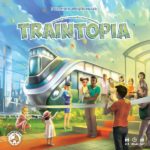
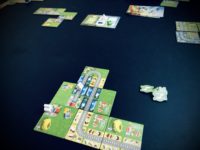
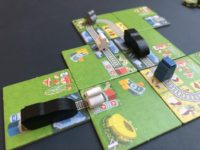



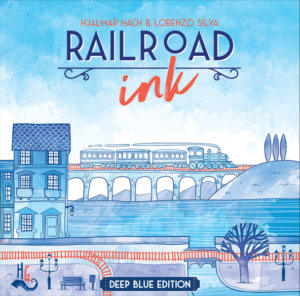
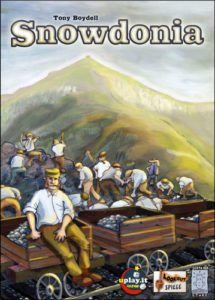


Sam says
Traintopia succeeds not-exactly as it's pitched, and I mean that in a good way. It looks a light, accessible family game, and can certainly be played as such. We've done that and it's been fun. But it's also a reasonably deep puzzle of optimization and luck-pushing. If you really want to go deep, you can keep an eye on what everyone's building: if that player has an 8-tile track with six green locations, they're probably going to grab the next green commuter. But you need it for your secret objective! I like how there are chest-deep waters here, in what look like the knee-splashing shallows. Fun.